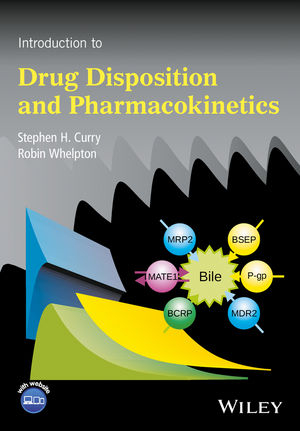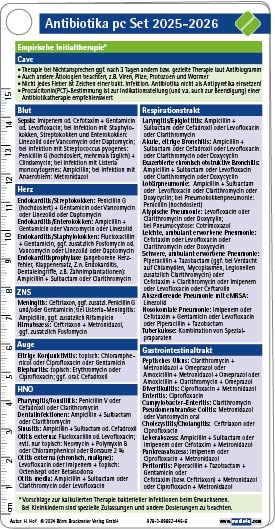
Introduction to Drug Disposition and Pharmacokinetics
John Wiley & Sons Inc (Verlag)
9781119261049 (ISBN)
The book will be of benefit to students of medicine, pharmacy, pharmacology, biomedical sciences and veterinary science, including those who have elected to study the topic in more detail, such as via electives and special study modules. It will be of benefit to those involved in drug discovery and development, pharmaceutical and medicinal chemists, as well as budding toxicologists and forensic scientists who require the appropriate knowledge to interpret their findings and as an introductory text for clinical pharmacologists. Early chapters describe the basic principles of the topic while the later ones illustrate the application of those principles to modern approaches to drug development and clinical use. Full colour illustrations facilitate the learning experience and supporting material for course leaders and students can be found on the Companion Web Site
"Another book on PK? Yes and there should be and it should be DD & PK. It is good, unique, and does fill a currently unmet need for those working in the xenobiotic arena. DD & PK is just like the perfect mystery novel—the one “you just can’t put down.” However, unlike a mystery novel which requires only one reading to find the answer, the reader of DD & PK will learn more than an answer to a single question. The reader will find many solutions to a wide variety of mysterious problems associated with the time course and actions of xenobiotics."
—International Journal of Toxicology, John A. Budny, PhD, President, PharmaCal, Ltd, 2018
"This book has many innovations that make a welcome addition to the bookshelves of a wide range of pharmaceutical scientists. The effective use of figures and tables to summarize and clarify a wide range of issues is to be commended, as are the learning objectives at the start of the chapter coupled with the summary at the end providing a succinct way in understanding the objectives of the chapter and together with links to a website provides accessibility for all from the neophyte pharmacokineticist to the consultant physician. A book all in the Pharma industry should be aware of."
—Int. J. of Pharmacokinetics, Howard M. Hill, ResolvPharma, 2018
"Overall, Introduction to Drug Disposition and Pharmacokinetics offers its readership an in-depth view of classic pharmacokinetic concepts. This book would be an excellent choice for a pharmacokinetics elective or as an adjunctive text for an introductory course. This book reviews a wide array of clinically relevant topics and encourages the reader to apply the knowledge gained to all medi-cations. A robust and varied amount of online material is provided to enhance understanding and encourage discussion. It is likely that all readers, novice or experienced pharmacists, would find value in this textbook."
— Currents in Pharmacy Teaching and Learning, Milena McLaughlin, Midwestern University Chicago College of Pharmacy, 2018
"In summary, this is an excellent textbook for students new to the field of pharmaceutics and medical, pharmacy, and veterinary students, particularly those who envision a career in drug development research in either academia or industry."
—Veterinary Pathology Review, John K. Amory, University of Washington, 2018
Stephen Curry was Professor of Pharmacology at The London Hospital Medical College, Professor of Pharmaceutical Sciences at the University of Florida, and Professor of Pharmacology and Physiology at the University of Rochester before founding ADispell. He also spent ten years with AstraZeneca and predecessor companies. A graduate of De Montfort University and King's College London, he was honoured by the Faculty of Medicine of London University with the award of the Doctor of Medical Science Degree and is a Fellow of the Royal Pharmaceutical Society. As CEO of ADispell, he currently works in the field of technology transfer and translational science with early stage companies based on discoveries at The University of Rochester and Cornell University. Robin Whelpton, after obtaining his first degree in Applied Chemistry, joined the Department of Pharmacology and Therapeutics, The London Hospital Medical College, University of London as research assist to Professor Curry. Having obtained his PhD in Pharmacology, he became Lecturer and then Senior Lecturer before transferring to Queen Mary University of London to teach pharmacology to preclinical medical and dental students. His last post before retiring was Senior Lecturer in Pharmaceutical Chemistry in the School of Biological and Chemical Sciences. He has wealth of experience teaching drug distribution and pharmacokinetics to undergraduate and postgraduate students of medicine, dentistry, pharmacology, pharmacy, biomedical sciences, pharmaceutical chemistry and forensic science.
Preface ix
Companion Website Directions xii
1. Introduction: Basic Concepts 1
1.1 Introduction 1
1.2 Drugs and drug nomenclature 3
1.3 Law of mass action 4
1.4 Ionization 9
1.5 Partition coefficients 12
1.6 Further reading 14
2. Drug Administration and Distribution 15
2.1 Introduction 15
2.2 Drug transfer across biological membranes 16
2.3 Drug administration 22
2.4 Drug distribution 31
2.5 Plasma protein binding 38
2.6 Further reading 43
2.7 References 43
3. Drug Metabolism and Excretion 45
3.1 Introduction 45
3.2 Metabolism 46
3.3 Excretion 58
3.4 Further reading 69
3.5 References 69
4. Single‐compartment Pharmacokinetic Models 71
4.1 Introduction 72
4.2 Systemic clearance 74
4.3 Intravenous administration 76
4.4 Absorption 79
4.5 Infusions 87
4.6 Multiple doses 90
4.7 Non‐linear kinetics 94
4.8 Relationship between dose, and onset and duration of effect 98
4.9 Limitations of single‐compartment models 99
4.10 Further reading 100
4.11 References 100
5. Multiple‐compartment and Non‐compartment Pharmacokinetic Models 102
5.1 Multiple‐compartment models 102
5.2 Non‐compartmental models 117
5.3 Population pharmacokinetics 121
5.4 Curve fitting and the choice of most appropriate model 122
5.5 Further reading 124
5.6 References 124
6. Kinetics of Metabolism and Excretion 126
6.1 Introduction 126
6.2 Metabolite kinetics 127
6.3 Renal excretion 137
6.4 Excretion in faeces 142
6.5 Further reading 143
6.6 References 144
7. Clearance, Protein Binding and Physiological Modelling 145
7.1 Introduction 145
7.2 Clearance 146
7.3 Physiological modelling 158
7.4 Further reading 161
7.5 References 161
8. Quantitative Pharmacological Relationships 162
8.1 Pharmacokinetics and pharmacodynamics 162
8.2 Concentration–effect relationships (dose–response curves) 163
8.3 Time‐dependent models 169
8.4 PK‐PD modelling 173
8.5 Further reading 177
8.6 References 177
9. Pharmacokinetics of Large Molecules 178
9.1 Introduction 178
9.2 Pharmacokinetics 179
9.3 Plasma kinetics and pharmacodynamics 184
9.4 Examples of particular interest 185
9.5 Further reading 191
9.6 References 191
10. Pharmacogenetics and Pharmacogenomics 192
10.1 Introduction 192
10.2 Methods for the study of pharmacogenetics 193
10.3 N‐Acetyltransferase 194
10.4 Plasma cholinesterase 197
10.5 Cytochrome P450 polymorphisms 199
10.6 Alcohol dehydrogenase and acetaldehyde dehydrogenase 202
10.7 Thiopurine methyltransferase 202
10.8 Phase 2 enzymes 202
10.9 Transporters 204
10.10 Ethnicity 206
10.11 Pharmacodynamic differences 206
10.12 Personalized medicine 208
10.13 Further reading 209
10.14 References 209
11. Additional Factors Affecting Plasma Concentrations 211
11.1 Introduction 211
11.2 Pharmaceutical factors 213
11.3 Sex 214
11.4 Pregnancy 218
11.5 Weight and obesity 220
11.6 Food, diet and nutrition 225
11.7 Time of day 226
11.8 Posture and exercise 228
11.9 Further reading 231
11.10 References 231
12. Effects of Age and Disease on Drug Disposition 233
12.1 Introduction 233
12.2 Age and development 234
12.3 Effects of disease on drug disposition 242
12.4 Assessing pharmacokinetics in special populations 256
12.5 Further reading 257
12.6 References 258
13. Drug Interactions and Toxicity 260
13.1 Introduction 260
13.2 Drug interactions 261
13.3 Toxicity 273
13.4 Further reading 282
13.5 References 282
14. Perspectives and Prospects: Reflections on the Past, Present and Future of Drug Disposition and Pharmacokinetics 284
14.1 Drug disposition and fate 284
14.2 Pharmacodynamics 286
14.3 Quantification of drugs and pharmacokinetics 286
14.4 The future 289
14.5 Postscript 291
14.6 Further reading 292
14.7 References 292
Appendices
1 Mathematical Concepts and the Trapezoidal Method 293
2 Dye Models to Teach Pharmacokinetics 300
3 Curve Fitting 303
4 Pharmacokinetic Simulations 307
Index 312
| Erscheinungsdatum | 14.01.2017 |
|---|---|
| Verlagsort | New York |
| Sprache | englisch |
| Maße | 168 x 241 mm |
| Gewicht | 635 g |
| Themenwelt | Medizin / Pharmazie ► Medizinische Fachgebiete ► Pharmakologie / Pharmakotherapie |
| Naturwissenschaften ► Biologie | |
| Naturwissenschaften ► Chemie | |
| Technik | |
| ISBN-13 | 9781119261049 / 9781119261049 |
| Zustand | Neuware |
| Informationen gemäß Produktsicherheitsverordnung (GPSR) | |
| Haben Sie eine Frage zum Produkt? |
aus dem Bereich


